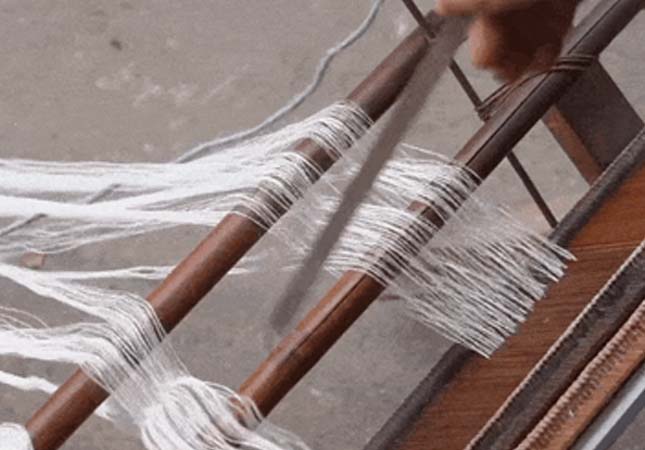As a new type of drawing-in equipment with a high degree of automation, automatic drawing-in machine has been already applied to most textile manufacturing enterprises in recent years. Compared with manual drawing-in, the speed and the drawing-in quality of automatic drawing-in machine are much faster and better, which meets the development needs of the modern textile industry.
Any of a modern textile enterprises cannot running well without an automatic drawing-in machine,that is, the automatic drawing-in machine has become an crucial factor to current market competitiveness of textile enterprises.
American H.D. Coleman invented the automatic drawing-in machine based on the principle of manual warping in 1904. Generally, the automatic drawing-in machine can be divided into 2 types: fixed type and movable type.
The fixed drawing-in machine will tie the finished yarn ends that have reeds, healds and warp stops with the weft yarns that on the new weaving beam in turns in the drawing-in room, while the movable drawing-in machine will tie the warp knots directly behind the loom, which is often used in the multi-heddle or jacquard fabrics production. It can only work after the weaving loom stops, but can reduce the labor intensity.
Few years later, the helical yarn splitter, electromagnetic suction stopper and rotary disc reed device appeared, which reduced the labor intensity of drawing-in and increased the drawing-in speed so that improved the productivity of manual drawing-in.
Manual Drawing-in
Manual drawing-in is generally processed on a drawing-in frame after separating yarns manually. Firstly insert the warp yarn into the warp stop piece and the heald eye with the warp drawing-in hook, then insert the warp yarns into the gap of reed pieces by a reed knife. It need 2 operators to finish the whole drawing-in process i nearly time, one person is working for passing the warp yarns and another person is working for drawing-in the warp yarns, later gradually developed as 1 person operation.
Manual drawing-in has high heavy workload but low output, it is suitable for the weaving process of complex texture or pattern and some production only need in small bath.
In mass production, the first weaving beam is still need to do the drawing-in operations manually for achieving the purpose of improving the quality of warp drawing-in, and the subsequent weaving beams are either tied manually or knotted manually or bonded with special adhesives. (The operation of knotting the yarn end that on the woven bobbin with the new warp that on the new weaving beam is called warp tying). Then move the warp stop piece, heald and reed that on the original weaving shaft to the new weaving shaft , a complete drawing-in work is finished.

Basic Principle of Automatic Drawing-in Machine
Automatic drawing-in is where the warp yarns are divided from the tensioned warp yarn layer, fed into the draw-in assembly one by one, the healds lined up in the same direction are separated from the stack, and the when transported to the draw-in position, the plastic arrow belt opens a gap on the reed, the reed moves one by one according to the drawing-in sequence, and a hook passes the warp through the warp stop piece and the heald & reed in one step. Thus the healds, which have been threaded with warp yarns, are arranged in the heald frame by this way.
The application of advanced equipment and reduce production costs has become a common concern for every textile enterprise due to the rapid development and the increasing labor costs of textile technology. Thanks to the ease operation of the automatic drawing-in machine, it increases flexibility in weaving preparation and provides quality assurance that cannot be obtained by manual drawing-in,which is worthy of promotion and application.




